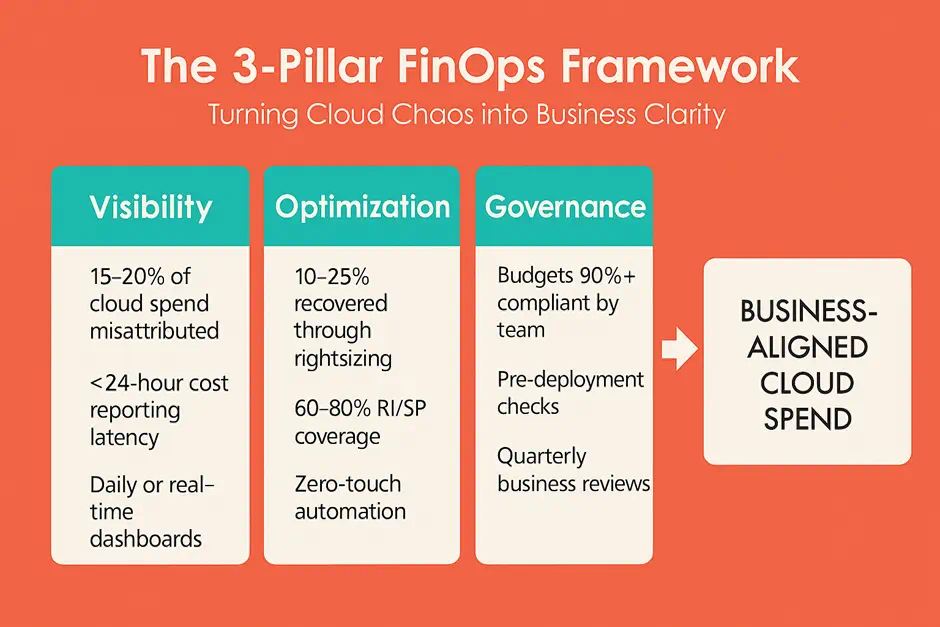Cloud isn’t expensive.
Mismanaged cloud is.
Over the last three years advising FinOps transformations across enterprises, I’ve realized that most organizations don’t lack intent — they lack a framework. Not just to control cost, but to drive value visibility, intelligent decisions, and cross-team accountability.
At an enterprise scale, even a 3% savings on cloud spend can translate into millions in margin uplift. But what’s often missing isn’t effort — it’s direction.
Across companies I’ve advised — including a telco reducing $12M annually, and a fintech scaling to 80% reserved coverage — the breakthrough didn’t come from new tools. It came from adopting a simple, scalable FinOps framework.
Here it goes (you may put it in 3 pillars)

1. Visibility – “You can’t manage what you can’t see.”
Let’s start with the most foundational — Visibility.
Don’t ask “What did we spend?” — ask “Who owns this spend, and what outcome did it drive?”
15–20% of cloud spend is misattributed or unallocated in early-stage FinOps teams. That’s millions going unexplained.
Mature teams achieve:
- 95%+ cost allocation coverage across accounts, projects, and teams
- <24-hour latency in cost reporting
- A shift from monthly to daily or real-time dashboards
2. Optimization – “Saving is not a one-time event.”
Industry data shows rightsizing alone can recover 10–25% of compute cost. But one-time cleanup is a vanity metric. What matters is continuous, policy-driven savings.
Enterprise optimization maturity looks like:
- 75%+ coverage of workloads under rightsizing policies
- 60–80% RI/SP coverage across steady-state services
- Zero-touch automation for idle resource cleanup and lifecycle enforcement
FinOps Tip:
Savings ≠ success — unless it’s tied to velocity, risk, and reinvestment. Automate what doesn’t need judgment.
3. Governance – “The culture layer most teams skip.”
70% of FinOps teams struggle with aligning engineering autonomy to financial guardrails. Governance isn’t bureaucracy — it’s your scale strategy.
High-maturity teams embed:
- Budget thresholds by team with 90%+ compliance
- Pre-deployment checks (CI/CD) on cost and compliance
- Quarterly business reviews (QBRs) where cloud metrics are tied to OKRs
FinOps Tip:
Good governance shifts FinOps from being “the finance nag” to a trusted cost advisor embedded in delivery.
Bringing It All Together
When these three pillars converge, we don’t just reduce spend — we transform cloud from a cost center to a value engine.
That’s what I call Business-Aligned Cloud Spend. You need one operating model that connects engineering behavior to business value.
